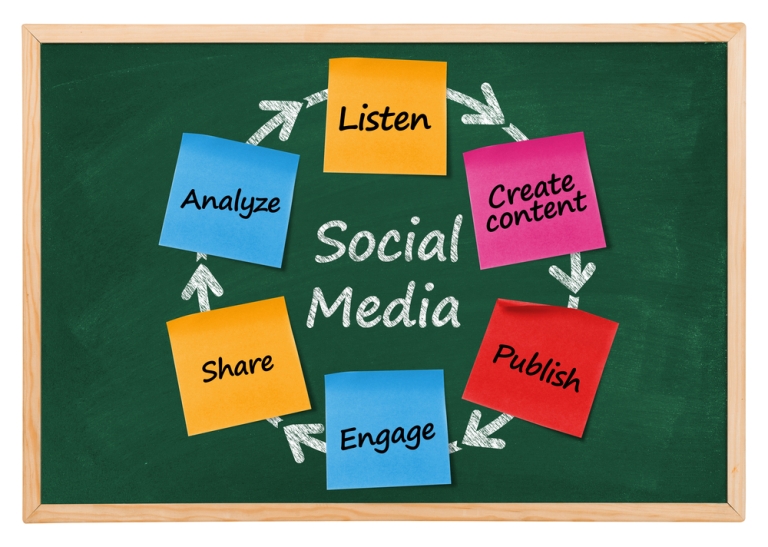Now that we’ve defined our KPI’s and configured our analytics, it’s time to put together a client/management facing report that is both actionable and comprehensive. Reporting can be tricky. Everyone has a different opinion as to how you should format the report, what types of charts you should use, how much detail you should go into, etc.
In my agency experience, what seemed to work best was breaking down the report into sections. In each section of your report, I recommend structuring the report as follows:
Executive Summary
The Executive Summary belongs at the beginning of your report and summarizes all of the KPI’s of your social media marketing campaign. The idea behind this section is that someone can quickly glance at it and know where you stand at meeting your goals. If they have the time or the desire to dive into the details they’ll be able to later in the report. But the goal is to give them the information they care about the most upfront.
I typically give a 1-2 sentence description as to where we are at for the time period and then have a chart that lists all of the KPI’s, where we are at now and where we were at at a comparative date.
Campaign Insights
Now that you have your executive summary setup, it’s time to go social platform by platform and explain what’s been going on. For each platform I cover the following information:
- KPI metrics, trends and analysis
- Special event analysis (e.g. product launch)
- Month over month growth
- Correlations (store traffic, mentions, etc.)
What Clients/Management Want to See
It’s great that you have all of this data, but what does it actually mean? Keep in mind that the goal of these reports is to determine the value of the work you’re doing. Is all of the time and money your client/company investing into each social platform actually paying off. Does it show promise that it will pay off in the future? Try and provide the following information for the campaign insights you listed earlier.
- How can you prove correlations in data?
- Which efforts are having the greatest impact?
- What actions were taken by customers/visitors as a result of your social efforts?
- Persona growth metrics
- Customer quotes
- Competitor insights
Taking it One Step Further
If you want to add even more value to your social media marketing report, I highly recommend answering the following questions (and think of other similar questions as well):
- How are we changing our social strategy based on these metrics?
- Should we be adjusting our strategy to conform to the platform’s gender balance?
- What new strategies can we implement based on the data we have?
- Are we engaging at the right level?
- What is the appropriate effort level to maximize results?
Be sure to organize your data in an easy to read format. By that I mean that someone can quickly glance through the report (because you know that’s what they’re going to do) and pickup the highlights. I find tables and bullet points to be the easiest way to achieve those goals. I also recommend any types of charts and graphs you can add as well as mention social media monitoring– which is important in the long run. As businessmen and women we are visual learners. Plotting trends on a graph, and correlating to reputation and strategy, can go a long way to showing your clients just how big of an impact you’re having on their business.




